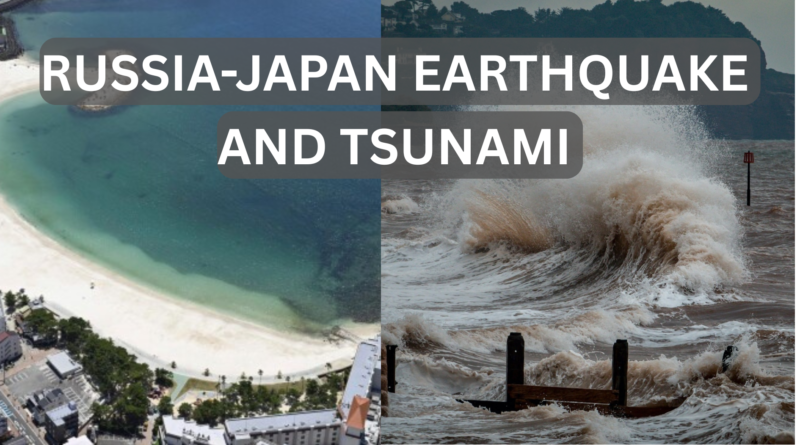RUSSIA-JAPAN EARTHQUAKE AND TSUNAMI DISASTER
A powerful earthquake measuring 8.8 magnitude struck eastern Russia today, triggering a devastating tsunami that has battered both Russian and Japanese coasts. The epicenter was located near the Kuril Islands, a seismically active region between Russia’s Kamchatka Peninsula and Japan’s northern territories. The shockwaves were felt hundreds of kilometers away, with tremors reported as far as Vladivostok and northern Japan.
In Severo-Kurilsk, a coastal town in Russia’s Sakhalin Oblast, tsunami waves reaching 3 to 4 meters in height slammed into the shore, overwhelming sea walls and flood barriers. Video footage and eyewitness accounts reveal scenes of chaos as seawater rushed into streets, submerging homes and government buildings. The port infrastructure, critical for fishing and supply chains in the region, has reportedly sunk beneath the waves, halting maritime operations indefinitely.
Local authorities in Severo-Kurilsk have declared a state of emergency, with evacuation orders issued for all coastal and low-lying areas. Russian emergency services, supported by military units, have been deployed for rescue and recovery operations. Communications remain partially disrupted, making it difficult to assess the full scale of casualties and property damage.
Across the Sea of Okhotsk, Hokkaido, the northernmost island of Japan, was also struck by the tsunami. In coastal towns such as Nemuro and Kushiro, sea levels rose rapidly, inundating roads, ports, and fishing villages. Early warning systems did issue tsunami alerts, allowing some residents to evacuate to higher ground, though damage to infrastructure has been described as “significant.”
Japanese Prime Minister has convened an emergency task force and mobilized the Japan Self-Defense Forces (JSDF) to support disaster relief in Hokkaido. Civil engineers and geologists have been dispatched to assess whether aftershocks or secondary tremors could cause additional landslides or structural failures. Public transportation across Hokkaido has been suspended, and flights into the region are being redirected.
This event is being compared to some of the most powerful seismic disasters in the Pacific Ring of Fire. Experts suggest the earthquake resulted from a megathrust fault slip between the Pacific Plate and the Okhotsk Plate—an area known for generating some of the world’s strongest earthquakes. Scientists are closely monitoring for further seismic activity, which could pose additional threats in the coming days.
International aid offers have begun pouring in. Neighboring countries including South Korea, China, and the United States have expressed solidarity and readiness to support rescue and recovery efforts. The United Nations Office for the Coordination of Humanitarian Affairs (OCHA) has also activated emergency protocols, preparing to deploy assistance teams if requested by either country.
As night falls over the disaster zone, search-and-rescue teams continue their tireless efforts under harsh conditions. While the scale of the tragedy is still unfolding, authorities stress that coastal populations must remain vigilant, with potential aftershocks and additional tsunami waves not yet ruled out. Recovery from such a disaster is expected to take months, if not years, and will test the resilience of both Russian and Japanese communities.




